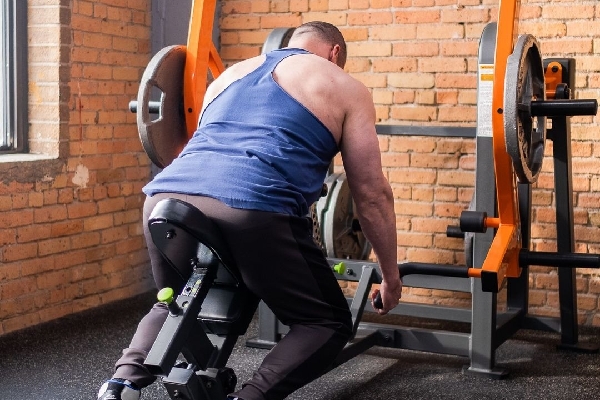3 Considerations for Movement Control
The execution of your lifts and the patterns for which you utilize for controlling the weight, have to be conducive to your biomechanics and overall stability within movement control. Being able to balance and handle massive amounts of weight will never be an easy task yet there are certain functions you can put in place to ensure both the safety and effectiveness of your training efforts.
Your form will always be the caveat for the perfection in your training and the planes of movement you trust will always lend its hand to your movement control within the lift. For these reasons, there are a few considerations to keep in mind while you train to ensure that you are always in complete control of your lifting methods.
Understanding Your Center of Gravity
Your balancing point in all free form movements, whereby you have to stabilize your body from head to toe, will be the most important facet in all of your free weight lifts. Knowing exactly what your balancing point is will be crucial for your engagement of the target muscle as well as your overall safety.
Whether you are performing a standing overhead press, a front or back squat, a dead lift, a standing lateral raise or an overhead triceps extension, how you set up your center of gravity plays a huge role in your movement pattern. If you’re set up too high, you’ll quickly lose balance. If you’re too low, you won’t find that hinge point to produce power.
So learning the exact point where you feel sturdy and powerful all at the same time is incredibly important for your ensuing strength success.
Fixed Plane Movement Control
Machine work plays a big role in many of our training sessions and because of this and due to the nature of the equipment we have at our disposal, learning how you move through a fixed plane has to become a main focus. Biomechanically speaking, you may or may not fit within the apparatus you choose to use.
The only way to figure this out is to pay very close attention to the engagement of the target muscle you are trying to focus in on. If you feel any discomfort in the joint at all, it may not be for you. If you feel like you can’t properly control the range of motion, then again it might not be a good fit.
Or if for some reason you can’t generate the type of power you want or the fixed position makes you feel unsafe, then leave the apparatus in search of another. It’s really all about the feeling that is provided during the execution of the movement that will determine your ability to control the exercise versus the exercise of movement control to you.
Concentric and Eccentric Freedom
In any movement you decide to utilize, the engagement of the muscle from the full eccentric to the full concentric has to feel free. Any restrictions whatsoever are sure signs that you aren’t in the type of movement control you should be in while exercising and nothing positive will likely occur.
Your joints, your tendons, your ligaments and your muscles are unique to you in how they work together and move together so it’s incredibly important for you to understand the freedom of your natural movement patterns.
Take the time to understand your movements free from resistance first and then while under tension and loads. This will always be the best strategy to use prior to undergoing any new sort of movement patterns. When an angle is changed or a fulcrum point is shifted away from what you already know, you have to take the time to learn from this new position. It will always be the safest and most advantageous way for you to introduce something new to your program or plan.
Being in control is something that is always going to be a consideration when pursuing strength or hypertrophy. It doesn’t matter what it is you are after, you always have to be in total control so that you are in charge of the outcome. When you lose this is when a negative outcome is likely to occur and we want to avoid that at all costs.
Learn what movement control means to you in all facets of your training so that you have a handle on what works and what doesn’t. Again, it’s the best way to forge ahead in your training and also the safest. It will take time but it is time well spent and you can trust me on that.
Author: Dana Bushell
Gym Star Team Member





